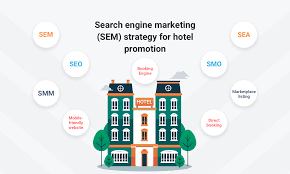Unlocking the Power of SEO and SEM for Digital Success
engine, marketing, search engine marketing, search marketing, sem, sem search engine marketing, seo, service marketing

The Difference Between SEO and SEM
Search Engine Optimization (SEO) and Search Engine Marketing (SEM) are two essential strategies for improving a website’s visibility in search engine results pages. While they both aim to increase traffic to a website, they have distinct differences in terms of approach and execution.
SEO: Search Engine Optimization
SEO focuses on optimizing a website’s content, structure, and technical aspects to improve its organic (unpaid) search engine rankings. This involves using relevant keywords, creating high-quality content, improving website speed and user experience, and obtaining backlinks from reputable sources. The goal of SEO is to increase a website’s visibility in organic search results and drive targeted traffic over time.
SEM: Search Engine Marketing
SEM, on the other hand, involves paid advertising strategies to increase a website’s visibility in search engine results pages. This includes Pay-Per-Click (PPC) advertising campaigns, display ads, remarketing, and shopping ads. SEM allows businesses to target specific keywords and demographics to reach their desired audience quickly and effectively.
The Relationship Between SEO and SEM
While SEO and SEM are distinct strategies, they can complement each other when used together effectively. By combining organic SEO efforts with targeted SEM campaigns, businesses can achieve maximum visibility in search engine results pages. SEO lays the foundation for long-term success by improving organic rankings, while SEM provides immediate results through paid advertising.
In Conclusion
Both SEO and SEM play crucial roles in enhancing a website’s online presence and driving traffic. Understanding the differences between the two strategies is essential for developing a comprehensive digital marketing plan that maximizes results. By incorporating both SEO and SEM into your marketing efforts, you can improve your website’s visibility, attract more visitors, and ultimately achieve your online marketing goals.
Top 5 Essential Tips for Enhancing Your SEO and SEM Strategy
- Focus on relevant keywords for your target audience.
- Create high-quality content that is valuable and engaging.
- Optimize meta tags, titles, and descriptions for search engines.
- Utilize backlinks from reputable websites to improve SEO performance.
- Regularly monitor and analyse your SEO and SEM efforts to make data-driven improvements.
Focus on relevant keywords for your target audience.
When implementing SEO and SEM strategies, it is crucial to focus on relevant keywords that resonate with your target audience. By conducting thorough keyword research and identifying the terms and phrases that your audience is actively searching for, you can tailor your content and advertising campaigns to attract the right visitors to your website. Choosing relevant keywords ensures that your efforts are targeted and effective, leading to improved visibility in search engine results pages and increased engagement with potential customers.
Create high-quality content that is valuable and engaging.
Creating high-quality content that is valuable and engaging is a crucial tip for SEO and SEM success. Content plays a significant role in attracting and retaining visitors to a website, as well as in improving search engine rankings. By producing content that offers genuine value to users, businesses can establish credibility, build trust, and encourage audience engagement. High-quality content not only helps in organic search engine optimization but also enhances the effectiveness of SEM campaigns by providing relevant landing pages for paid advertising efforts. In today’s digital landscape, creating compelling content is key to standing out online and driving meaningful results.
Optimize meta tags, titles, and descriptions for search engines.
To enhance the visibility of your website in search engine results pages, it is crucial to optimise meta tags, titles, and descriptions. These elements provide search engines with valuable information about the content of your web pages, helping them understand the relevance of your site to user queries. By incorporating relevant keywords and crafting compelling titles and descriptions, you can improve your website’s click-through rate and attract more organic traffic. Effective optimisation of meta tags, titles, and descriptions is a fundamental aspect of both SEO and SEM strategies, contributing to better search engine rankings and increased visibility online.
Utilize backlinks from reputable websites to improve SEO performance.
Utilizing backlinks from reputable websites is a highly effective strategy to enhance SEO performance. By obtaining quality backlinks from trusted sources, a website can improve its credibility and authority in the eyes of search engines. These backlinks act as endorsements, signalling to search engines that the content is valuable and relevant. As a result, the website’s organic search rankings are likely to improve, leading to increased visibility and traffic. Incorporating backlinks from reputable websites into an SEO strategy can significantly boost a website’s overall performance and help it stand out in competitive search results.
Regularly monitor and analyse your SEO and SEM efforts to make data-driven improvements.
Regularly monitoring and analysing your SEO and SEM efforts is crucial for making informed decisions and driving continuous improvements. By examining key metrics such as website traffic, keyword performance, ad click-through rates, and conversion rates, you can identify strengths and weaknesses in your strategies. This data-driven approach allows you to adjust your tactics, refine your targeting, and allocate resources effectively to maximise the impact of your digital marketing efforts. Stay proactive in monitoring your SEO and SEM campaigns to stay ahead of the competition and achieve long-term success in improving your online visibility and driving targeted traffic to your website.

